英文介绍【中国传统婚礼】课件(20201010204843)
- 格式:pdf
- 大小:4.27 MB
- 文档页数:21
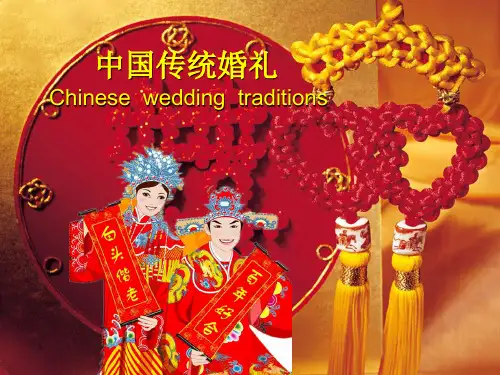
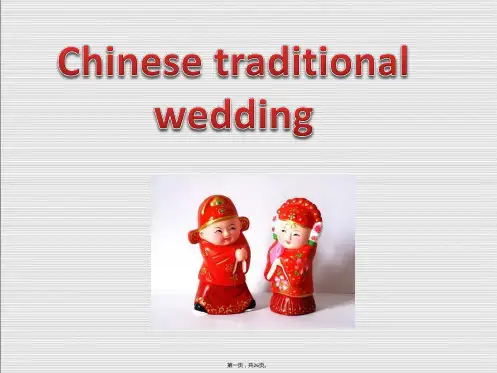
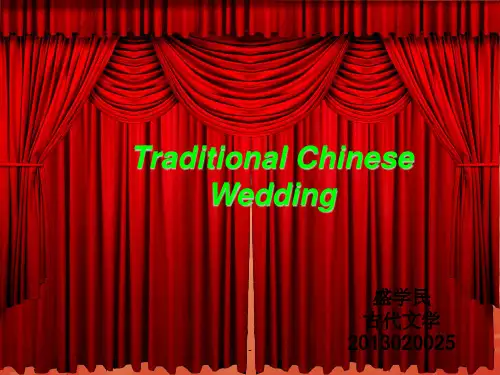
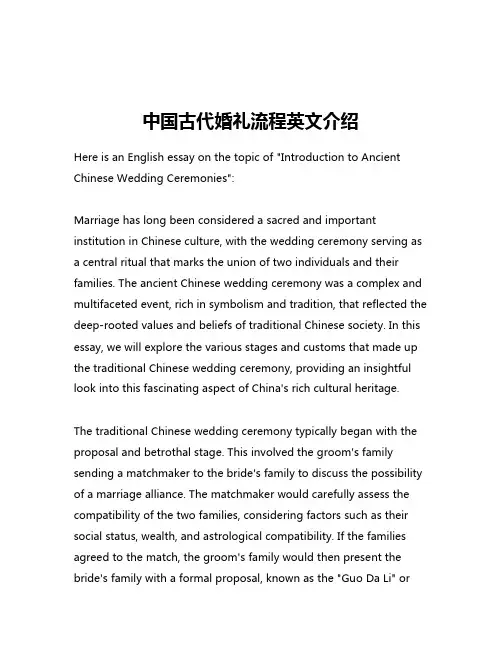
中国古代婚礼流程英文介绍Here is an English essay on the topic of "Introduction to Ancient Chinese Wedding Ceremonies":Marriage has long been considered a sacred and important institution in Chinese culture, with the wedding ceremony serving as a central ritual that marks the union of two individuals and their families. The ancient Chinese wedding ceremony was a complex and multifaceted event, rich in symbolism and tradition, that reflected the deep-rooted values and beliefs of traditional Chinese society. In this essay, we will explore the various stages and customs that made up the traditional Chinese wedding ceremony, providing an insightful look into this fascinating aspect of China's rich cultural heritage.The traditional Chinese wedding ceremony typically began with the proposal and betrothal stage. This involved the groom's family sending a matchmaker to the bride's family to discuss the possibility of a marriage alliance. The matchmaker would carefully assess the compatibility of the two families, considering factors such as their social status, wealth, and astrological compatibility. If the families agreed to the match, the groom's family would then present the bride's family with a formal proposal, known as the "Guo Da Li" or"Grand Ceremony of Proposing Marriage."The next step in the process was the exchange of betrothal gifts, which served to solidify the marriage agreement. The groom's family would present the bride's family with a carefully selected set of gifts, including items such as jewelry, clothing, and traditional Chinese delicacies. These gifts were not only symbolic but also served to demonstrate the groom's family's wealth and status. In return, the bride's family would present the groom's family with their own set of gifts, known as the "Jia Li" or "Family Ceremony."Once the betrothal was officially sealed, the couple would then begin the process of preparing for the wedding ceremony itself. This involved a series of rituals and customs, each with its own significance and symbolism. One of the most important of these was the "Guo Qin" or "Fetching the Bride" ceremony, where the groom and his entourage would travel to the bride's home to formally escort her to the wedding venue.During the Guo Qin ceremony, the groom would be accompanied by a procession of musicians, servants, and other attendants, all carrying auspicious items such as the bridal sedan chair and the "Fenghuang" or "Phoenix Crown," a traditional headdress worn by the bride. Upon arriving at the bride's home, the groom would perform a series of rituals, such as bowing to the bride's family and presenting themwith additional gifts.The wedding ceremony itself was a grand and elaborate affair, with the bride and groom participating in a variety of rituals and customs that were deeply rooted in Chinese philosophy and beliefs. One of the most iconic of these was the "Tea Ceremony," where the newlyweds would serve tea to their respective families, symbolizing their respect and filial piety.Another important ritual was the "Chuang Dong" or "Bed Turning" ceremony, where the bride and groom would be escorted to the bridal chamber and helped into the wedding bed. This ceremony was seen as a way to ensure the couple's fertility and the continuation of the family line.Throughout the wedding ceremony, the bride and groom would also wear traditional Chinese attire, with the bride typically wearing a long, red gown and the groom wearing a formal suit or robe. The color red was particularly significant, as it was believed to bring good luck and ward off evil spirits.Even after the wedding ceremony itself, the rituals and customs continued, as the newlyweds participated in a series of post-wedding events and celebrations. These included the "Yan Koi" or "Visiting the In-Laws" ceremony, where the bride would visit her new husband'sfamily, and the "Jing Zhe" or "Waking the Bride" ceremony, where the bride would be awakened on the morning after the wedding.In conclusion, the traditional Chinese wedding ceremony was a complex and multifaceted event that was deeply rooted in the cultural and philosophical beliefs of ancient Chinese society. From the initial proposal and betrothal stages to the elaborate rituals and customs of the wedding day itself, the Chinese wedding ceremony was a reflection of the importance placed on marriage and family in traditional Chinese culture. By understanding and appreciating the rich history and symbolism of these ancient wedding traditions, we can gain a deeper appreciation for the enduring legacy of Chinese culture and its continued impact on the modern world.。

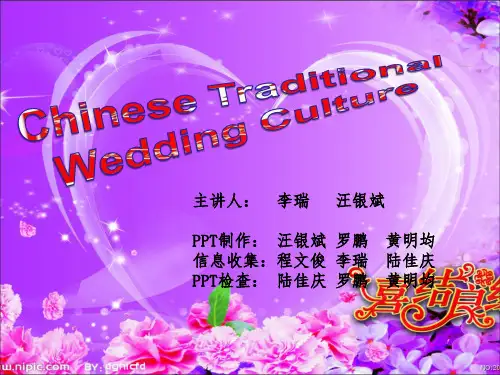
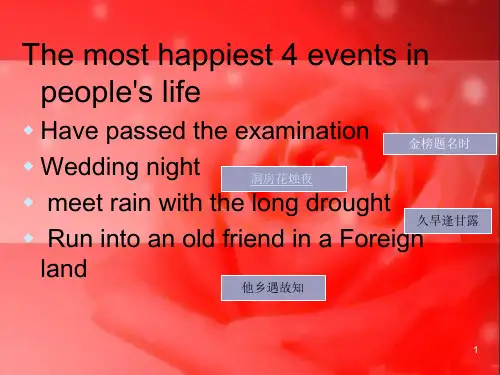
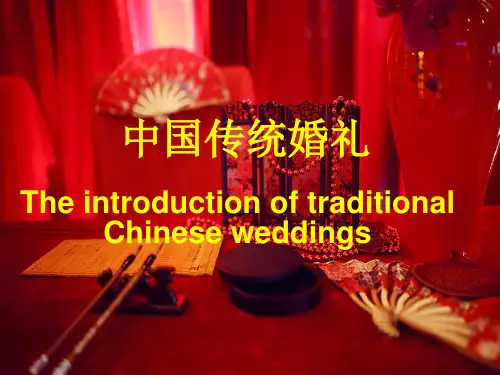
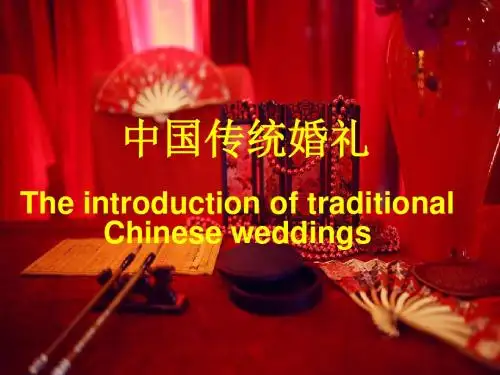
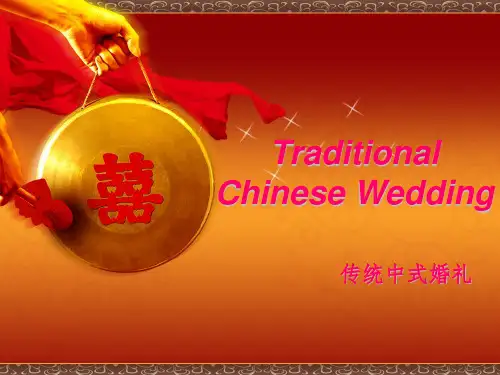
![中国传统婚礼文化(英文完整版)[优质ppt]](https://uimg.taocdn.com/a5faa6707cd184254a353569.webp)